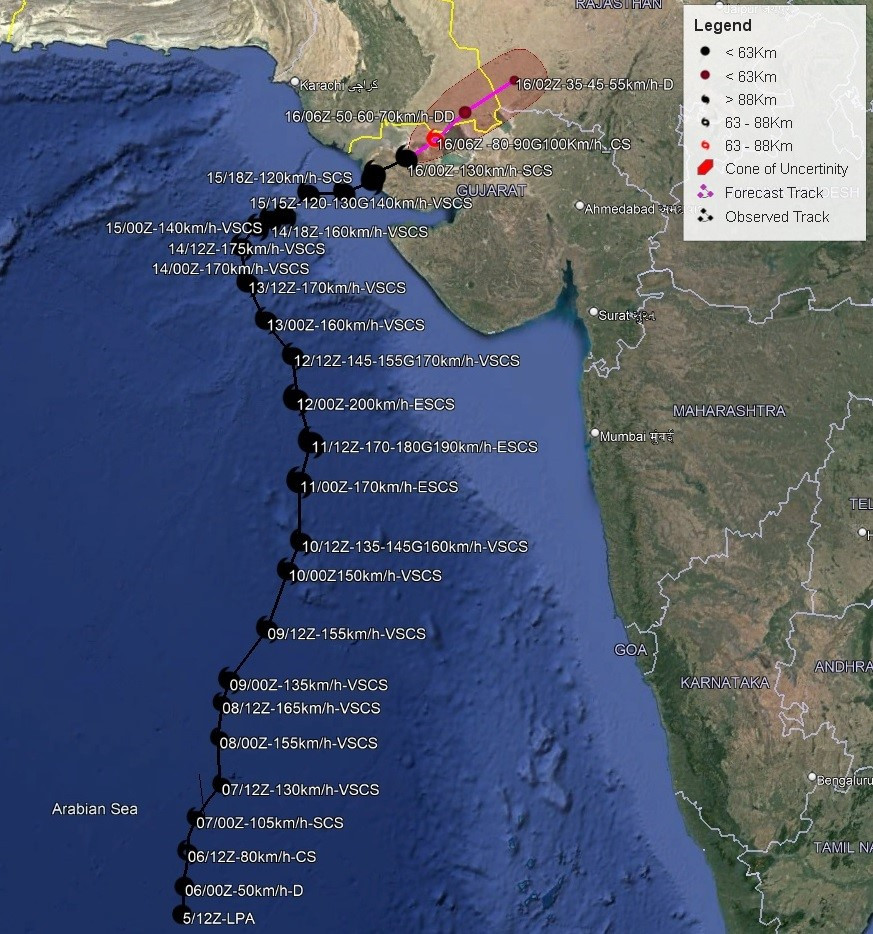
Cyclone Biparjoy tore down power poles and uprooted trees in Tharparkar, Umerkot and Badin on Friday after pummelling the coastline of Pakistan and India, but the storm turned out to be weaker than initially feared.
Prior to its landfall on Thursday evening, more than 180,000 people in Sindh and the Indian state of Gujarat had been evacuated from its path. The cyclone brought sustained winds of up to 125 kilometers (78 miles) per hour, but it weakened overnight.
The timely issuance of early warnings, accurate identification of vulnerable areas, and prompt evacuations played a crucial role in preventing major casualties from the cyclone. As a result, on Friday, shops and markets gradually reopened in Thatta under drizzling skies and a cool ocean breeze, providing a sense of relief to the affected communities.
"So far, so good," said 40-year-old government worker Hashim Shaikh. "We were pushed into a state of fear for the past several days, but now it seems to be over."
Contrary to predictions, Keti Bandar, which was expected to be the hardest hit, reported no damage, according to engineer Rahimullah Qureshi from the Sindh irrigation department. The Pakistan Meteorological Department advised local authorities to remain on alert for heavy rainfall in certain coastal areas until Saturday.
Hyderabad, Nooriabad, and Thatta were expected to experience moderate to heavy rain, as forecasted by the department. Tragically, at least four people lost their lives in rain-related incidents. However, Climate Change Minister Sherry Rehman stated that there were no direct casualties resulting from the cyclone's impact on the coastal areas of Pakistan.
District officials reported varying amounts of rainfall, including 81mm in Diplo, 69mm in Islamkot, 34mm in Nangar Parkar, and 28mm in Kaloi, with Umerkot district recording 122mm of rain. Continuous rainfall led to a power outage in Tharparkar district.
“It is raining for the last 14 hours,” said Sajid Bajeer, a Mithi-based journalist. “Officials say it will continue for a few more hours,” he added.
The Sindh health department's Director General, Dr. Irshad Memon, confirmed the deaths of four individuals in the past three days, while reassuring the availability of essential medicines and healthcare services in all operating hospitals.
Relief efforts have been ongoing, with mosquito nets provided to families and additional measles vaccines administered to children. The relief camps will remain operational until June 19. Some residents, like Abdul Shakoor from Keti Bandar, expressed relief that the cyclone did not hit their region as predicted, highlighting the discrepancy between the forecast and the actual impact.
The provincial government has successfully relocated over 82,000 individuals from the coastal areas and is currently providing food and other facilities to 50,000 people across 81 camps. Once the impact of the storm subsides further, the affected individuals will be allowed to return to their homes, with the Sindh government providing one week's ration to support them during their recovery.
With additional input from Agencies
























COMMENTS
Comments are moderated and generally will be posted if they are on-topic and not abusive.
For more information, please see our Comments FAQ